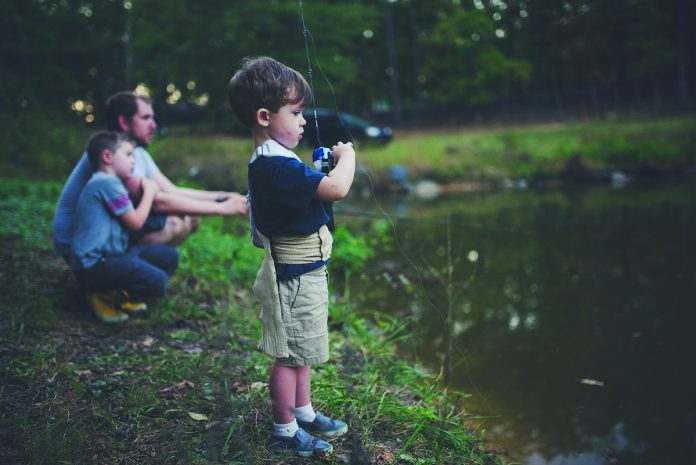Pond owners use various strategies to stock their ponds. Some work and some don’t. It’s not as simple as stocking small numbers of many types of fish in hopes of having a diverse fish population. Some species of fish are more suitable in Midwestern ponds than others.
Learn which common Midwestern fish species have the most success in pond ecosystems, and which fish work well together.
Bass and Bluegill
Stocking your pound with a 2:1 to 5:1 ratio of bluegill to bass is one of the most successful strategies. However, the bass should be one year older than the bluegill if you’re stocking them at the same time.
Both fish thrive in the warm-water habitat provided by most ponds. The bass can provide sport fishing opportunities once populations are established. The bluegills provide a food base for the bass and can provide fishing opportunities for younger anglers. In order to ensure the establishment of bass populations, take care not to disturb their nests at the edge of the pond in the spring and regulate the harvest of fish from your pond — don’t over-harvest bass while under harvesting bluegill.
Both largemouth and smallmouth bass are successful pond fish, with largemouth being the more common choice.
Sunfish
Although bluegills are usually the most successfully stocked sunfish, other types are sometimes used in their place. The alternates, however, tend to be harder to catch and have unpredictable survival rates. Pumpkinseed sunfish are sometimes used in place of bluegills to feed on snails and reduce swimmer’s itch, a rash-causing parasite carried by waterfowl and snails.
Perch
Yellow perch can be stocked for ice fishing, but they should be stocked in combination with bass to keep their populations under control because they reproduce quickly.
Channel Catfish
Channel catfish can be successful in ponds when stocked with largemouth bass at a stocking density of 5:1 catfish to bass. They can reach large sizes, but their survival and reproduction can be unpredictable.
Brown Bullhead
Although this small catfish rarely grows larger than 12 inches in ponds, it is an excellent panfish and sport fish. They have high survival rates because of their ability to tolerate pond conditions — high water temperatures, muddy water and low dissolved oxygen. However, they can be problematic because they can quickly become overpopulated, resulting in a lot of stunted catfish stirring up the mud on the bottom of the pond looking for food. They are best used in ponds that can’t support other fish species.
Golden Shiners
Golden shiners can be used in place of bluegill as a food source for bass. They should be stocked with bass at a density of about 400 adults per surface acre of pond. They do best in ponds with aquatic vegetation that provides cover and breeding locations. They can also be used as baitfish for muskie, pike, and pickerel.
Fathead Minnows
Fathead minnows are tolerant of pond water quality and reproduce quickly, which makes them another good baitfish. However, bass prey upon them easily, so they must be stocked frequently and may not be an ideal choice for ponds with an established bass population.
Darters
Darters are small, bottom-dwelling forage fish that are intolerant of high water temperatures and muddy water. Darters will only survive if the water in your pond is high quality. Johnny Darters and Tesselated Darters are recommended for ponds.
Fish to avoid
While some fish are suited to a pond environment, others are not. Avoid these species when stocking your pond:
- Walleye
- Northern pike
- Muskellunge
- Pickerel
- Black Crappie












